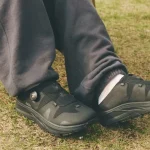The final federal transportation bill set for approval by both the House and Senate will launch a new Safe Routes to School program, and strengthen existing programs that will make it safer and easier for millions of Americans to bicycle and walk. However, an important piece of the bill related to bicycle safety, the Fair Share for Safety provision was removed. This would have required states to spend their safety funds in proportion to bicycle and pedestrian deaths.
The upside of the legislation includes the new Safe Routes to School program, championed by Representative James Oberstar of Minnesota, which is funded at $612 million over 5 years and will help make it safe and convenient for children to walk to school.
Grants administered by state Departments of Transportation will allow communities to build sidewalks, fix hazards, and slow traffic near residential areas. A separate program, the Non-Motorized Transportation Pilot Program, will grant each of four designated communities $6.2 million annually over 4 years to develop comprehensive networks for bicycling and walking to demonstrate the potential of such networks to shift travel patterns.
“This bill will help states provide substantial benefits for adults and children who ride bicycles, and this will benefit America as a whole by helping people avoid traffic congestion, by producing less air pollution, and by helping more Americans lead active, healthy lives,” says Andy Clarke, president of the Board of America Bikes and executive director of the League of American Bicyclists.
The bill also strengthens three existing programs of importance to the bicycling and outdoor communities: Transportation Enhancements, Congestion Mitigation and Air Quality (CMAQ), and Recreational Trails. The Transportation Enhancements program has been a primary source of funding for multi-use trails and other facilities, and funding for the program is set at approximately $3.5 billion over 5 years.
CMAQ helps communities improve air quality with non-polluting solutions with funding set at $8.6 billion over 5 years. The Recreational Trails program uses off-road vehicle fuel taxes to build trails; it will receive a higher portion of the revenue from those taxes, receiving $370 million over five years, $100 million more than the original allocation in the last bill, TEA-21.
In other legislative news, OIA recently announced that the House and Senate have passed legislation making it possible for industry trade organizations to organize and offer health care insurance to its members. This could drastically reduce the costs of these programs for small businesses.















